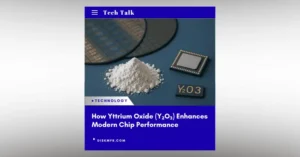- Differences of Parameters
| SSD Features | Enterprise SSD | Industrial SSD | Consumer SSD |
| DRAM Cache | Yes | No | No |
| Low Latency | Yes | Yes | No |
| SSD life, Endurance, DWPD,TBW | High | High | Low |
| Performance throttling to increase SSD life | Yes | No | No |
| Thermal throttling to increase SSD life | Yes | No | No |
| Amount of OP for optimized endurance | High | High | Low |
| NAND Flash Type | TLC, QLC | SSD life, Endurance, DWPD, TBW | SLC |
| TLC Nand configured as psuedoMLC=2/3 TLC capacity | Yes | No | No |
| TLC Nand configured as psuedoSLC=1/3 TLC capacity | No | Yes | No |
| FW Optimized for IOPS | TBD | TBD | No |
| FW Optimized for MB/s | TBD | TBD | No |
| SSD FW optimized for uncompressed data (write amplification & compression enabled) | Yes | No | No |
| Power fail management, data loss protection | Yes | No | No |
| SSD Features | Enterprise SSD | Industrial SSD | Comsumer SSD |
| Capacity Goals | High | Low | Low |
| Hot-Swap, Hot Plug | Yes | No | No |
| Feature and Performance cost basis | Yes | Yes | No |
| Value cost basis | No | No | Yes |
| DualPort | Yes | No | No |
| NVMe Interface | Yes | No | Yes |
| SAS Interface | Yes | No | No |
| Consumer SSD | Yes | TBD | Yes |
| FW Stored Redundantly (eliminates SSD bricking) | Yes | Yes | No |
| Full Data Path ECC | Yes | No | No |
| Hardware Encryption, Self Encrypting Drive | Yes | Yes | Yes |
| Highest UBER possible | Yes | Yes | No |
| Conformal Cost Sealant | No | Yes | No |
| Temperature endurance | -40℃~85℃ | -40℃~85℃ | 0℃~70℃ |
- Difference of Usage Scenario
| Deffs | Enterprise SSD | Industrial SSD | Consumer SSD |
| Platforms | Servers, Storage, Arrays, Cloud, Rack-Mounted Sleds computer and storage | Factory, Auto Compute Systems, Gaming | PCs, Client, Mobile Devices, Portables, Tablets, etc. |
| Performance | Random Sensitive | Reliability Sensitive | Sequential Sensitive |
| Lifetime | 1~5 DWPD | 500 TBW | |
| Capacity | 0.6TB~8TB | 64GB~2TB | |
| Endurance(UBER) | 10*E-16 | 10*E-15 | |
| Power Consumption(Controller) | 5-10W | <5mW Idle, <2.5mW Active | |
| Use Case | Read & Write intensive, 1- 5x DWPD, 24/7 Duty Cycle, 0~70C, 5Y Service Life | Wide range of mixed Workloads, 24/7 Duty cycle, -40 to 85C, 8+Y Service Life | Mostly Read(80/20), 8hr Duty cycle, 0-70C, 1-3Y Service Life |
| Bottom Line | Performance, Capacity, Green & Endurance levels of Redundancy | Reliability, Endurance, LCM & TCO | Price & Performance |
- Difference in Reliability Requirements
| Application Class | Active Use (Power on) | Retention Use (Power off) | UBER Requirement |
| Enterprise SSD | 55℃ | 24hours/day | 40℃ | 3months | 1e-16 |
| Industrial SSD | 55℃ | 24hours/day | 40℃ | 3months | 1e-16 |
| Consumer SSD | 40℃ | 8hours/day | 30℃ | 1year | 1e-16 |
Solid State Drive (SSD) Endurance Workloads, the industrial class differs in a number of ways from consumer class SSDs including but not limited to their ability to support heavier write workloads, more extreme environmental conditions, and recovery from a higher UBER than a consumer SSD
.For More, Please visit our FAQs for your reference or Contact us.
Thanks for your Reading!







